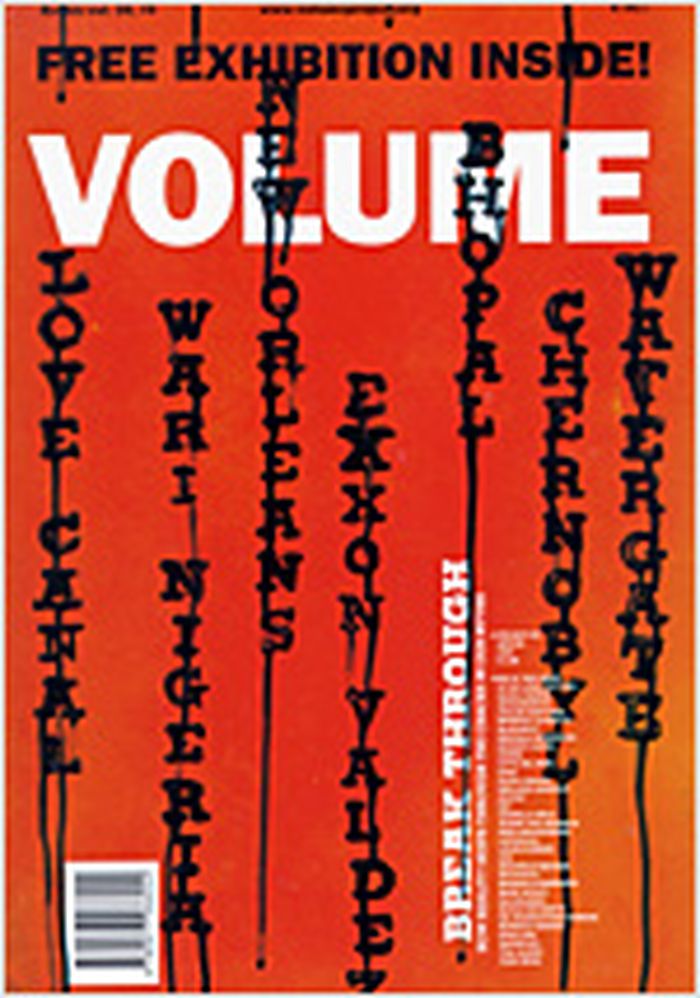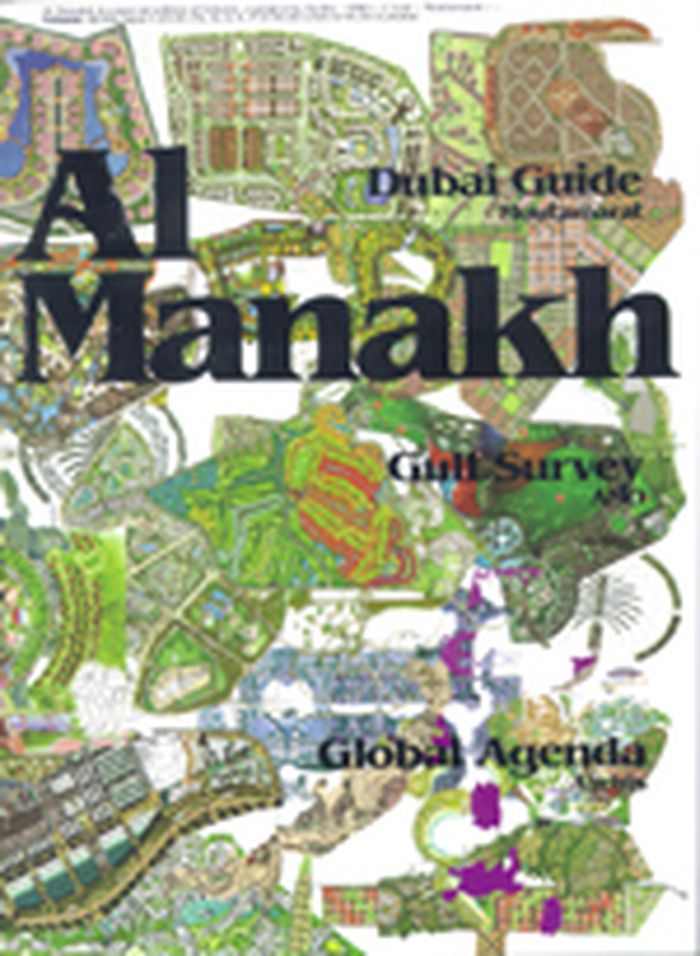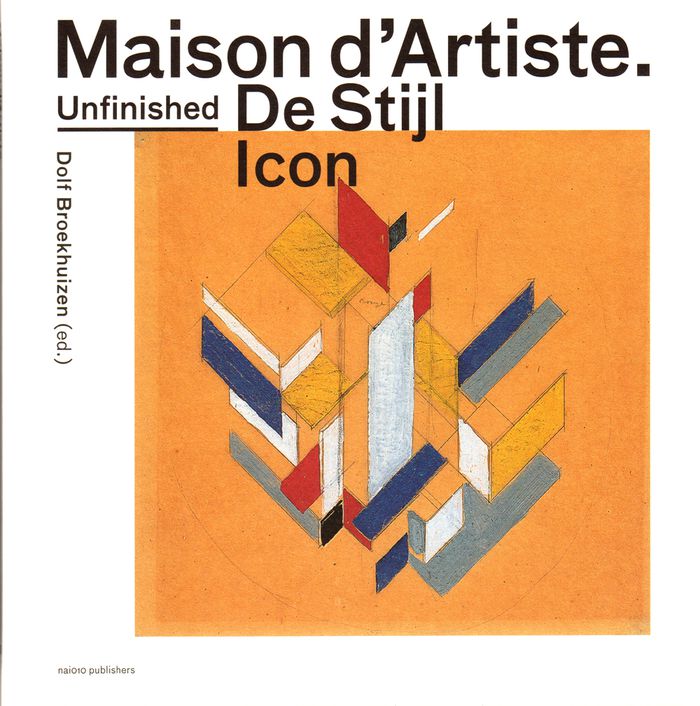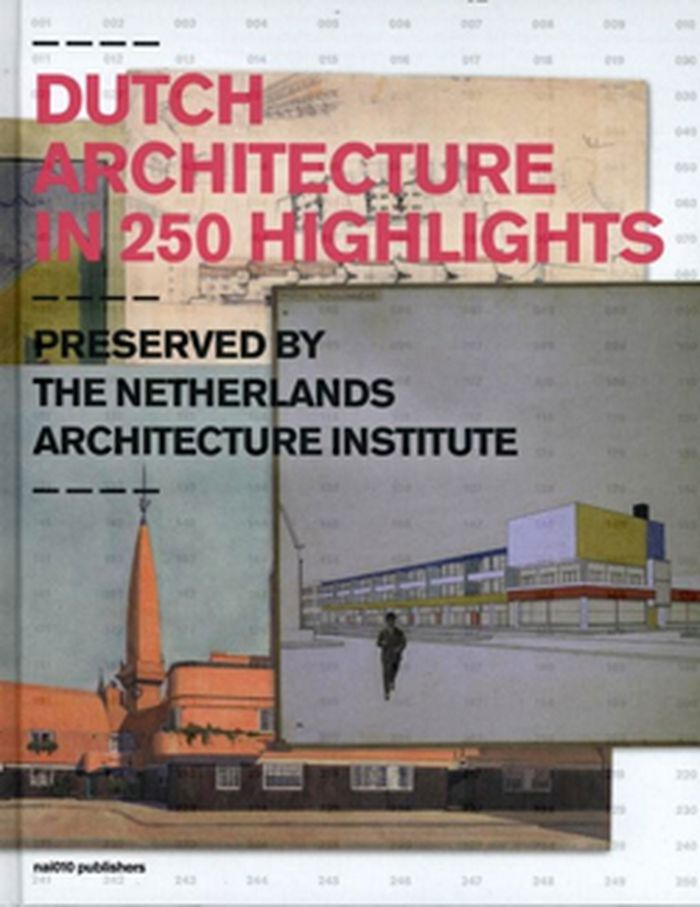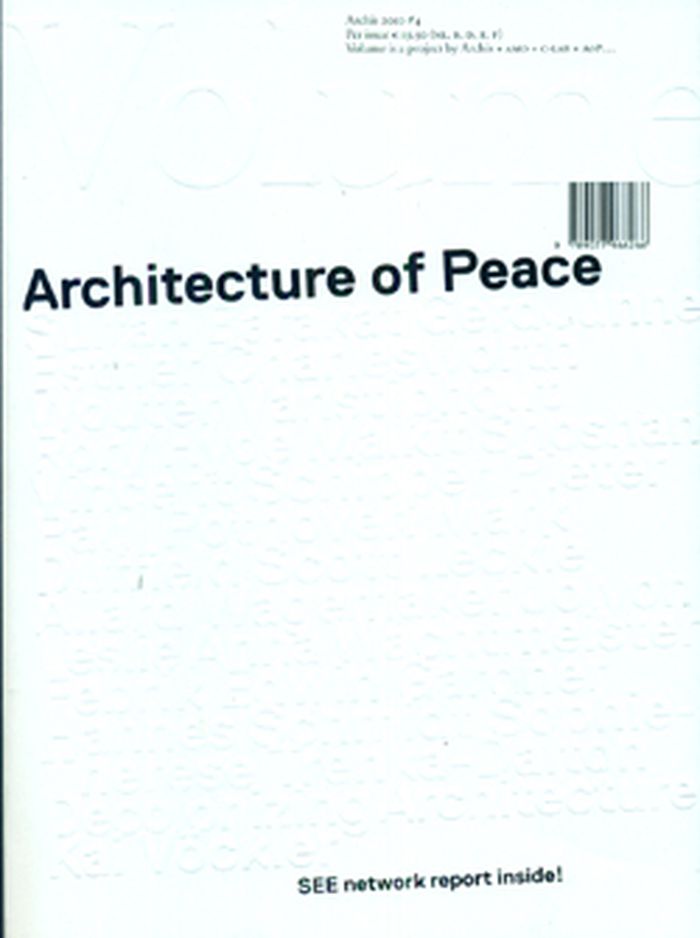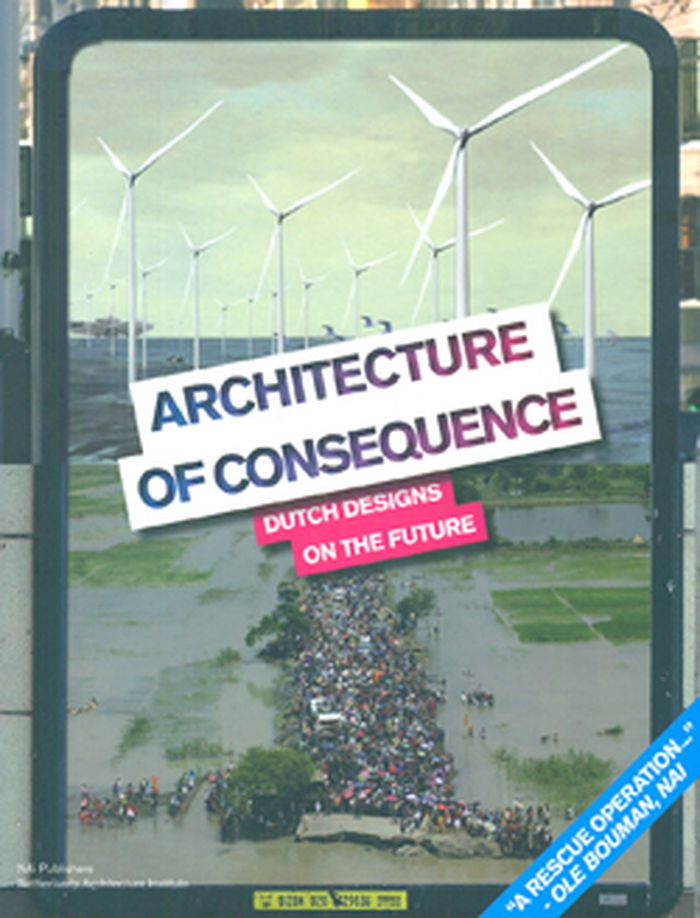Volume no 4 : break through
$24.50
(disponible en magasin)
Résumé:
Volume is a project by AMO + C-LAB + Archis.
Volume no 4 : break through
Actions:
Prix:
$24.50
(disponible en magasin)
Résumé:
Volume is a project by AMO + C-LAB + Archis.
Revues
Volume 12 : Al Manakh
$57.95
(disponible sur commande)
Résumé:
Unveiled at the International Design Forum, held this year in Dubai, "Al Manakh" provides a long overdue, and much needed survey of the current state of architecture and design in the Middle East. Comprising three sections, the first features a guide to Dubai, edited by Moutamarat; the second, a survey of planning and development in the Gulf States, by AMO; and lastly, a(...)
août 2007, Amsterdam
Volume 12 : Al Manakh
Actions:
Prix:
$57.95
(disponible sur commande)
Résumé:
Unveiled at the International Design Forum, held this year in Dubai, "Al Manakh" provides a long overdue, and much needed survey of the current state of architecture and design in the Middle East. Comprising three sections, the first features a guide to Dubai, edited by Moutamarat; the second, a survey of planning and development in the Gulf States, by AMO; and lastly, a Global Agenda for design, as envisioned by Archis. Illustrated throughout, and accompanied by essays and commentaries, "Al Manakh" provides valuable insights into a dynamic and volatile region.
périodiques
Volume 11 : cities unbuilt
$35.50
(disponible sur commande)
Résumé:
It seems an eternal distinction: sometimes people build, sometimes they destroy. However, since we have a concept of modernity, we also understand that building is very often based on sheer destruction. It is ‘the price of progress’. A new insight is now emerging: much destruction also has an agenda. It has a precision that reminds us of architecture. It has a formal(...)
Volume 11 : cities unbuilt
Actions:
Prix:
$35.50
(disponible sur commande)
Résumé:
It seems an eternal distinction: sometimes people build, sometimes they destroy. However, since we have a concept of modernity, we also understand that building is very often based on sheer destruction. It is ‘the price of progress’. A new insight is now emerging: much destruction also has an agenda. It has a precision that reminds us of architecture. It has a formal dimension that reminds us of design. In this issue: explore the sinister creativity of Cities Unbuilt.
périodiques
mai 2007, Amsterdam
Revues
Maison d'Artiste, an unfinished icon by De Stijl. Theo van Doesburg and Cornelis van Eesteren
$65.00
(disponible en magasin)
Résumé:
Though it was never built, the design for the legendary artist’s house Maison d’Artiste is one of the key works of the Dutch avant-garde movement De Stijl. Created in 1923 by painter Theo van Doesburg and architect Cornelis van Eesteren for De Stijl’s first group exhibition, the Maison d’Artiste was intended to encapsulate what De Stijl aspired to: a new everyday(...)
Maison d'Artiste, an unfinished icon by De Stijl. Theo van Doesburg and Cornelis van Eesteren
Actions:
Prix:
$65.00
(disponible en magasin)
Résumé:
Though it was never built, the design for the legendary artist’s house Maison d’Artiste is one of the key works of the Dutch avant-garde movement De Stijl. Created in 1923 by painter Theo van Doesburg and architect Cornelis van Eesteren for De Stijl’s first group exhibition, the Maison d’Artiste was intended to encapsulate what De Stijl aspired to: a new everyday environment achieved through the harmonious fusion of painting and architecture. The scale model presented De Stijl’s ideal space for life and work, with a gym, a music room and a studio, as well as living spaces like guest rooms and bathrooms. Maison d’Artiste: An Unfinished Icon by De Stijl explores the revolutionary cultural importance of the design, its significance for the history of De Stijl and its place in a history of the unbuilt architecture of the 20th century.
Architecture, monographies
$80.00
(disponible en magasin)
Résumé:
Drawing from the collection of the Netherlands Architecture Institute, "Dutch Architecture in 250 Highlights" celebrates the collection's centenary with this portrait of the rich and varied architectural history of the Netherlands. This broad and voluminous publication brings together the designs, buildings and ideas that have helped to build the considerable reputation(...)
Dutch architecture in 250 highlights : preserved by the Netherlands Architecture Institute
Actions:
Prix:
$80.00
(disponible en magasin)
Résumé:
Drawing from the collection of the Netherlands Architecture Institute, "Dutch Architecture in 250 Highlights" celebrates the collection's centenary with this portrait of the rich and varied architectural history of the Netherlands. This broad and voluminous publication brings together the designs, buildings and ideas that have helped to build the considerable reputation of Dutch architecture around the world, from the nineteenth century to the present. Architecture historians Ole Bouman, Behrang Mousavi, Hetty Berens, Suzanne Mulder and Ellen Smit guide the reader through more than 250 outstanding buildings and designs, by architects ranging from Cuypers, Berlage, Kromhout, Van Eesteren, Stam and Wijdeveld to Weeber, Coenen and Koolhaas. The thematic and chronological chapters elaborate on their designs in plans, sketches, maquettes and photographs.
$28.00
(disponible en magasin)
Résumé:
This issue of Volume is largely based on a two-day symposium ‘how do we materialize peace’ held at the NAI in Rotterdam in 2010. The symposium was the kick-off to explore potentials of architecture in the field of post-conflict reconstruction. Awareness, good practice and knowledge exchange are all part of the project with pragmatism as the guiding rule.
Volume 26: Architecture of Peace
Actions:
Prix:
$28.00
(disponible en magasin)
Résumé:
This issue of Volume is largely based on a two-day symposium ‘how do we materialize peace’ held at the NAI in Rotterdam in 2010. The symposium was the kick-off to explore potentials of architecture in the field of post-conflict reconstruction. Awareness, good practice and knowledge exchange are all part of the project with pragmatism as the guiding rule.
Revues
$42.00
(disponible sur commande)
Résumé:
For this book, the Netherlands Architecture Institute selected 22 Dutch architecture firms with genuinely innovative ideas on these seven imperatives and the will to do something about them. The result is an agenda for the future of our living environment and a proof that designers have the creative power to make it happen. Architecture of Consequence proves that any(...)
Architecture of consequence, dutch designs on the future
Actions:
Prix:
$42.00
(disponible sur commande)
Résumé:
For this book, the Netherlands Architecture Institute selected 22 Dutch architecture firms with genuinely innovative ideas on these seven imperatives and the will to do something about them. The result is an agenda for the future of our living environment and a proof that designers have the creative power to make it happen. Architecture of Consequence proves that any notion that architecture should be an “expression of its time,” or should do no more than express the vanity of its commissioners, pales into insignificance when compared to its tremendous potential for resolving urgent societal problems.
